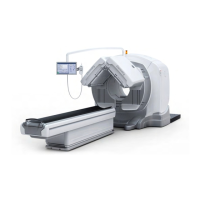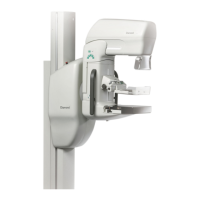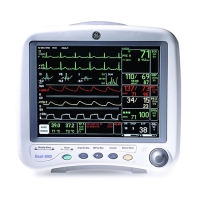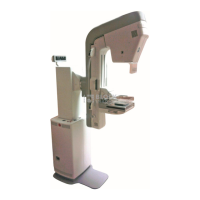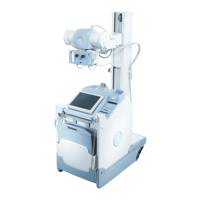GE HEALTHCARE
DIRECTION 2307224-100, REVISION 6DISCOVERY LS SYSTEM SERVICE MANUAL
Page 316 Chapter 12 - Troubleshooting
12.2 Manual Table Operation Issues
This section contains a list of problems that may be encountered during operation of the Discovery
LS Manual table, suggests their likely causes and the action that can be taken to rectify the problem.
A summary of the issues is presented in table and more detailed explanations are given in the
following sections.
CAUTION IN ALL THE PROCEDURES DESCRIBED IN THIS SECTION, IT IS ESSENTIAL THAT THE
SERVICE ENGINEER USES ONLY THE PROPER EQUIPMENT AND TAKES ALL THE
NECESSARY PRECAUTIONS TO PREVENT POSSIBLE INJURY TO PERSONNEL AND
DAMAGE TO EQUIPMENT.
Problem Likely Cause
Suggested Action/
Replace if Necessary
Clutch fails to engage/
disengage.
• E-Stop circuitry activated.
• Faulty KBPB supply cable
connection.
• Faulty clutch control signal
cable connection.
• Faulty clutch power cable
connection.
• Blown fuse in KB Box.
• Release E-Stop button.
• Connect cable properly.
• Connect cables properly.
• Connect cable properly.
• Replace fuse.
KB Box replacement may be
necessary. (More details in
Section 12.2.1.)
Base axis does not move. • Mechanical interference.
• Malfunctioning locking
mechanism.
• Faulty KBPB supply cable.
• Blown KB Box fuse.
• Remove mechanical interference.
• Repair malfunction.
• Reconnect/replace cable.
• Replace fuse.
KB Box replacement may be
necessary. (More details in
Section 12.2.2.)
Base axis moves
constantly.
• Faulty Remote Control cable
switch.
• Faulty KB Box.
• Replace remote control cable.
• Replace KB Box. (More details in
Section 12.2.3.)
Base axis moves in one
direction only.
• Faulty Remote Control cable
switch.
• Faulty KB Box.
• Replace remote control cable.
• Replace KB Box. (More details in
Section 12.2.4.)
Base axis does not stop at
the limit switch and collides
with mechanical stopper.
• Faulty pin locking mechanism.
• Faulty connections of Position
cable.
• Repair/replace pin locking
mechanism.
• Connect Position cable properly.
(More details in Section 12.2.5.)
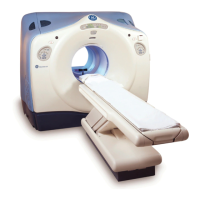
